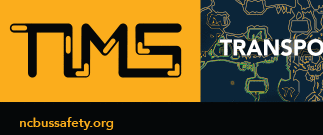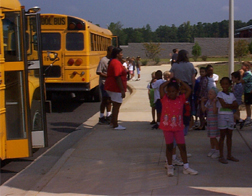Documentation
NCPTA Conference Presentations
Transfer Stops and Mid-Day Runs (2022)
Reports (2022)
Batch User Fields/Excel (2022)
-Time saving techniques for routing studentsTIMS Through the Years (2018)
TIMS Reporting (2014)
Powerschool and TIMS (2014)
Miscellanious Presentations and Documents
2021
Fall Planning & Summer School (PDF)
- Preparing for expanded Summer School Programs and Reopening Schools in August 2021- The above presentation was recorded and viewable by clicking here
password required for viewing: X&63F.F52020
Fall & Summer Planning: Preparing Bus Routes for the First Day of School (PDF)
- The above presentation was recorded and viewable by clicking here
2019
TIMS Fall Planning and Summer School Seminar (March 2019)
Example forms from seminar: Ridership Survey & Trans Request
School Replacement Database 2019 Overview & Instructions - PDF and PPT
Lost assignments 2019 Overview & Instructions - PDF and PPT
2018
Sample bus deassignment form (2018)
TIMS Compliance Document - June 2018
Older, but still relavent prentations
TIMS to PowerSchool - Transportation Data Import
- Jan 2016
Bell Times Information and worksheet
TIMS Best Practices (2013)
Geocode Course 2 Powerpoint (2011)
Archived documentation: Preparing Plan-B Routes in a COVID19 Environment
TIMS Webinar from June 24, 2020 covering TIMS Data Preparation for potential limited capacity Plan B School Bus Routes. (download the Webinar or PDF Presentation)
ITRE-TIMS Webinar: Plan B Route Preparation
The Webinar Covers the Following Topics
- Using a Single Database for Each Group of AB Students
- Managing A and B Databases
- Importing Special Plan B Codes to Identify AB Bus Riders
- EMU Process - Batch Fill User Field
- EMU Process - Deassigning Students from A and B Databases
- EMU Process - Deassigning Empty Stops from A and B Databases
- Importing Special Plan B Codes to Identify AB Bus Riders
- Evaluating Plan B Routing Requirements
- Ridership Counts by Schools and Neighborhoods
- Number of Bus Runs Required (Loads)
- Improving Bus Runs
- Resequencing Stops, Moving Stops Between Runs, Creating More Runs
- Designing Shorter Runs to Improve Route Pairing
- Analyzing School Supervision Time Required Before/After Bells
Coordinate A and B Database Info with GPS Vendors


